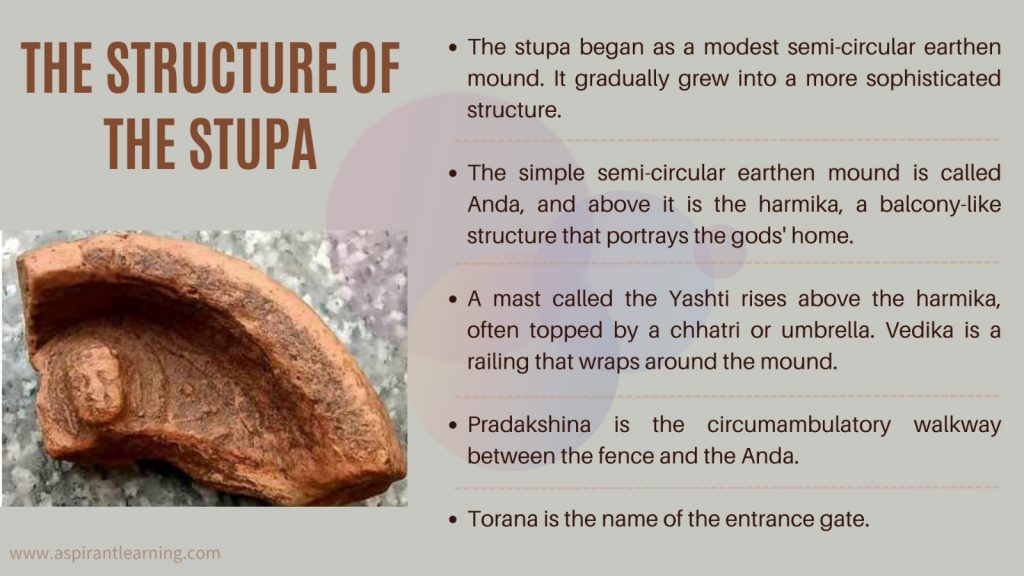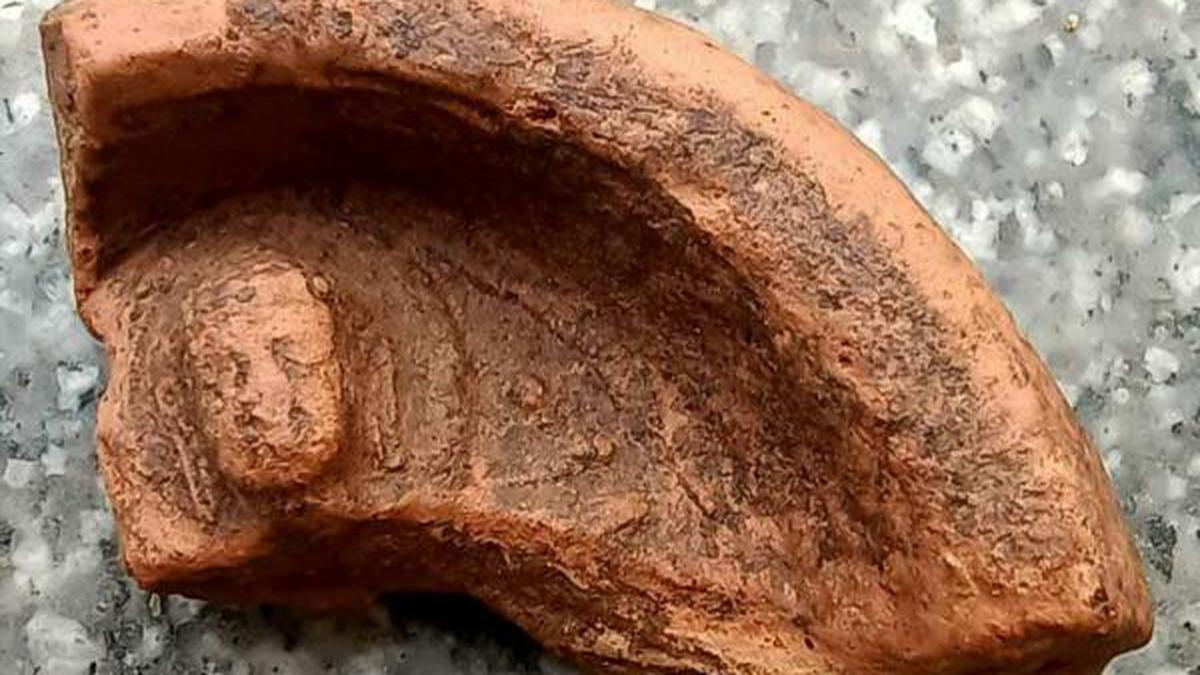News Highlight
The Archaeological Survey of India stumbles upon a 1,300-year-old Buddhist Stupa at Odisha’s Khondalite stone mining site.
Key Takeaway
- The state-run Odisha Mining Corporation was digging Khondalite stones for the ambitious 3,000-crore project to turn Puri into a world heritage city.
Stupa
- About
- The stupa is a Sanskrit word for a heap.
- It began as a modest semicircular earthen mound, later named Anda.
- With the passage of time and the inclusion of artwork, it gradually evolved and became a more sophisticated structure.
- Stupas were constructed in sacred locations.
- Holy because they were associated with Buddha’s life.
- Relics of the Buddha, such as his bodily remains or things he used, were buried behind these mounds, referred to as stupas.
- Furthermore, stupa construction may have been pre-Buddhist, but it became connected with Buddhism.
How were stupas built?
- The inscriptions on the railings and pillars of these stupas indicate that donations were given for their construction and decoration.
- Rulers, such as The Satavahanas, provided some donations;
- Others were made by guilds, such as the ivory craftsmen, who funded a portion of one of Sanchi’s entrances.
- Hundreds made contributions of women and men, whose names were also mentioned in these Inscriptions.
- Sometimes, together with the name of where they came from.
- As well as their occupations and relatives’ names.
- Furthermore, Bhikkhus and bhikkhunis also contributed to the construction of these stupas.
Sanchi Stupa
- About
- The Sanchi Stupa is located in the Indian state of Madhya Pradesh.
- It is one of the world’s most essential and well-preserved Buddhist structures, dating back to the third century BCE.
- Its huge hemispherical dome and elaborate carvings depict scenes from Buddha’s life.
- Its fine stone gateways, called “toranas,” as well as its exquisite stone gateways, make it a true architectural masterpiece.
- Sanchi Stupa is a UNESCO World Heritage Site representing India’s rich cultural legacy.
- In addition, visitors from all over the world come to admire its ageless beauty and historical significance.
Barhut Stupa
- About
- The Bharhut Stupa was constructed in the second century BCE.
- It is an old Indian Buddhist monument with elaborate carvings and sculptures illustrating stories from the Buddha’s life.
- This magnificent stupa can be found in the Indian state of Madhya Pradesh.
- Furthermore, it is a monument to ancient India’s creative and architectural prowess, and it continues to attract visitors with its beauty and rich cultural legacy.
Puri Heritage Corridor Project
- Overview
- It is an Odisha government rehabilitation project in Puri to build an international heritage site.
- It includes the Jagannath temple.
- Although conceived in 2016, it was not revealed until December 2019.
- The Shree Jagannatha Heritage Corridor (SJHC) or the Shree Mandira Parikrama Project, for renovating the region around the temple, falls under the umbrella project.
- The project involves redeveloping the Shree Jagannath Temple Administration (SJTA) building, a 600-capacity Srimandir reception centre, Puri Lake, and a Musa River revitalisation plan.
- In addition, the Odisha government has identified three goals for the renovation of the region surrounding the temple;
- Temple security, devotee safety, and the establishment of a holy atmosphere for devotees.
- Furthermore, the government funded the project’s Augmentation of Basic Amenities and Development of Heritage and Architecture in Puri (ABADHA) scheme.
Jagannath Temple
- King Anatavarman Chodaganga Deva of the Eastern Ganga Dynasty is thought to have built the temple in the 12th century.
- Additionally, the Jagannath Puri temple is known as ‘Yamanika Tirtha‘.
- According to Hindu beliefs, the presence of Lord Jagannath has neutralised the power of ‘Yama,’ the god of death.
- This temple is known as the “White Pagoda,” It is included in Char Dham pilgrimages (Badrinath, Dwaraka, Puri, Rameswaram).
- There are four gates to the temple- Eastern ‘Singhdwara‘, the main gate with two crouching lions, Southern ‘Ashwadwara‘, Western ‘Vyaghra Dwara and Northern ‘Hastidwara‘.
- Furthermore, each gate has a carving of one of the forms.
- The temple is thought to have been built in the 12th century by King An.
- The Aruna stambha, or sun pillar, initially at the Sun Temple at Konark, sits in front of the entryway.

Pic Courtesy: The Hindu
Content Source: The Hindu



